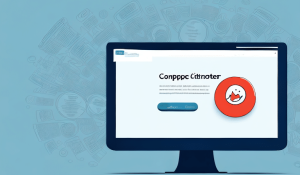Choosing the right team communication software or work communication apps can make or break productivity in today’s workplace. With hybrid, remote, and frontline employees all needing fast, reliable, and engaging ways to connect, the demand for modern team communication apps and group communication apps has never been higher. According to a Gallup study, highly engaged teams show 21% greater profitability. Clearly, effective communication is not just helpful — it’s essential. In this guide, we’ll compare the best options for 2025, highlight the must-have features, and show you how to choose the right platform for your business.
What is Team Communication Software?
Team communication software is a digital platform that allows employees to collaborate, share updates, and stay connected across different locations and devices. Unlike collaboration tools that focus on task or project management, apps for team communication prioritize real-time and multi-channel messaging. This ensures every employee—from desk workers to frontline staff—can access the information they need. Furthermore, many of these platforms are categorized as work communication apps, meaning they unify multiple channels into one hub.
How Do Team Communication Apps Work?
Team communication apps function as centralized hubs where messages, updates, and files are shared across teams. Typically, they include the following:
- Multiple communication modes: instant messaging, video calls, team announcements, and intranet-like updates.
- Group capabilities: channels, threads, and topic-based conversations to keep communication organized.
- Administrative controls: ability for managers to add/remove users, control data sharing, and manage permissions.
- File sharing & storage: secure sharing of documents, photos, and videos.
- Mobile-first access: ensuring employees can stay connected on the go.
These mechanics streamline communication, reduce reliance on scattered tools, and ensure documentation is always accessible. Moreover, effective work communication apps help build healthier work-life boundaries by separating personal and professional channels. As a result, organizations can achieve greater clarity and efficiency.
How to Choose the Right Team Communication App
Organizations evaluating apps for team communication should follow a structured process. A clear selection framework ensures the chosen software delivers long-term value:
- Identify your workforce type (desk, frontline, hybrid).
- Score features that matter most (chat vs broadcast vs engagement).
- Check integrations with HR, payroll, and IT systems.
- Compare ROI and long-term adoption costs.
👉 We reviewed 25+ platforms and narrowed the list to the 10 best team communication apps in 2025 based on features, usability, scalability, and ROI.
Top Team Communication Apps in 2025
In 2025, leading team communication apps include HubEngage, Slack, Microsoft Teams, Google Chat, Connecteam, Staffbase, Zoho Cliq, Twist, Pumble, and Chanty. By listing them together, organizations can easily compare mainstream chat tools with unified engagement platforms. Consequently, the decision-making process becomes more straightforward. Below are their pros, cons, and pricing details:
1. HubEngage
A next-generation team communication software that goes beyond chat. HubEngage unifies multi-channel communication (app, email, SMS, WhatsApp, digital signage) with employee recognition, surveys, and engagement analytics.
Pros: All-in-one platform, mobile-first, gamification, AI-powered automation.
Cons: May be overkill for very small teams.
Pricing: Flexible pricing based on modules and workforce size.
👉 Discover the HubEngage Team Communication App.
By comparing HubEngage vs Slack or HubEngage vs Microsoft Teams, businesses can see the difference between a chat-first tool and a full communication + engagement suite.
2. Slack
A chat-first platform known for real-time messaging, integrations, and channels. It’s particularly effective for desk-based knowledge workers.
Pros: Wide adoption, robust integrations, strong search.
Cons: Can get noisy, limited engagement analytics.
Pricing: Free tier available; paid plans start at $7.25/user/month.
👉 Learn more in our instant messaging for business guide.
3. Microsoft Teams
Best for organizations already using Microsoft 365. It combines chat, video, and file collaboration in one ecosystem.
Pros: Deep Office 365 integration, enterprise-grade security.
Cons: Interface can feel bloated, adoption challenges for non-Office users.
Pricing: Included in Microsoft 365; standalone plans available.
4. Google Chat
Ideal for Google Workspace users looking for basic chat and collaboration.
Pros: Easy integration with Gmail, Calendar, Drive.
Cons: Feature-light compared to competitors.
Pricing: Included with Google Workspace subscription.
5. Connecteam
Popular with frontline and deskless workers.
Pros: Mobile-first, task management, time tracking.
Cons: Limited advanced communication features.
Pricing: Free for up to 10 users; paid plans from $29/month.
6. Staffbase / LumApps
Intranet-style communication hubs focused on internal comms.
Pros: Strong publishing tools, top-down announcements.
Cons: Weaker in two-way, real-time chat.
Pricing: Enterprise pricing on request.
7. Zoho Cliq
Zoho Cliq is designed for businesses looking for an affordable, integrated team chat solution that ties directly into the Zoho ecosystem.
Pros: Affordable, strong integrations with Zoho apps, customizable workflows.
Cons: Less popular outside Zoho ecosystem, limited recognition features.
Pricing: Free for small teams; paid plans start at $3/user/month.
8. Twist
Twist is built by the team behind Todoist and focuses on structured, asynchronous communication. This helps teams avoid noisy, real-time chat overload.
Pros: Organized threads, async-first design, integrations with productivity tools.
Cons: Limited adoption compared to Slack/Teams, no advanced engagement analytics.
Pricing: Free tier; paid plans from $6/user/month.
9. Pumble
Pumble is a free business communication tool aimed at small to mid-sized teams that want an easy Slack alternative.
Pros: Completely free, unlimited users, familiar Slack-like interface.
Cons: Lacks advanced enterprise features, limited support.
Pricing: Free; premium features planned.
10. Chanty
Chanty is a simple and affordable team chat tool designed for small to medium-sized businesses. It’s easy to set up and offers task management features.
Pros: Easy to set up, built-in task management, affordable pricing.
Cons: Limited advanced enterprise features, smaller ecosystem of integrations.
Pricing: Free plan available; paid plans start at $3/user/month.
📊 Team Communication Apps Comparison Table
| Tool | Best For | Key Features | Limitations | Pricing |
|---|---|---|---|---|
| HubEngage | Hybrid + Frontline | Multi-channel, recognition, analytics | Richer platform than small teams may need | From $1/user/month |
| Slack | Knowledge workers | Chat, integrations, channels | Can get noisy | From $7.25/user/month |
| Microsoft Teams | MS 365 users | Chat, video, Office integration | Heavy UX | Included in 365 |
| Google Chat | Google Workspace | Chat, Drive integration | Limited features | Included in Workspace |
| Connecteam | Frontline workers | Mobile-first, task mgmt | Shallow comms depth | From $29/month |
| Staffbase / LumApps | Internal comms | Intranet, announcements | Weak real-time chat | Enterprise pricing |
| Zoho Cliq | Zoho ecosystem | Chat, workflows, Zoho integrations | Limited outside Zoho ecosystem | From $3/user/month |
| Twist | Async-first teams | Organized threads, async design | Limited adoption, no advanced analytics | From $6/user/month |
| Pumble | SMBs & startups | Free chat, Slack-like interface | Few enterprise features, limited support | Free |
| Chanty | Small businesses | Chat + built-in task management | Smaller ecosystem of integrations | From $3/user/month |
Key Features to Look For in Team Communication Software
Key features define whether your chosen apps for team communication will improve adoption or create more silos. Therefore, businesses should carefully assess which capabilities will have the greatest impact:
- Messaging: group chat, private chat, threaded conversations. Moreover, ensure it supports file and media sharing.
- Multi-channel reach: push notifications, SMS, WhatsApp, email to guarantee every employee is reached.
- Integrations: HRIS, CRM, productivity suites to reduce silos.
- Engagement features: recognition, surveys, rewards to keep morale high.
- Administrative controls: manage user access, remove accounts, and secure company data.
- Ease of use: mobile access, intuitive UI, and simple onboarding.
- Analytics dashboards: open rates, engagement, sentiment to measure impact.
- Security & compliance: SOC2, ISO, GDPR, HIPAA adherence to maintain trust.
- AI capabilities: chatbots, automated summaries, translations for efficiency.
Additionally, some group communication apps emphasize structured channels and permissions, while others prioritize speed and integrations. Consequently, transitioning to the right option requires understanding these nuances.
Benefits of Team Communication Apps
Implementing work communication apps provides more than just messaging convenience. In fact, it delivers measurable business benefits across multiple dimensions:
- Centralized communication: Reduce email overload and fragmented tools.
- Higher engagement: Recognition and feedback improve morale.
- Frontline access: Mobile-first, multilingual, offline-ready.
- Retention & productivity: Companies with strong communication see 20–25% productivity gains (McKinsey). Moreover, research from the Edelman Trust Barometer shows transparent communication builds trust.
- Media support: Modern tools support high-quality image and video sharing, making them ideal for creative industries like salons, restaurants, and retail.
- Built-in productivity: Many apps now integrate calendars and to-do lists, reducing the need for extra tools.
- Employee directory & knowledge base: Some tools include searchable directories and centralized resources, ensuring teams can quickly access contacts and company information.
In short, effective work communication apps and group communication apps help unify the workforce, reduce silos, and foster collaboration across departments. As a result, organizations become more agile and resilient.
Use Cases: Desk, Frontline, Hybrid, and Global Teams
Different industries and workforce structures demand different types of group communication apps. This section highlights how these platforms apply across scenarios:
- Desk workers: quick chat, file sharing, video calls.
- Frontline employees: push/SMS alerts, mobile intranet.
- Hybrid teams: blend of real-time chat + async updates.
- Global orgs: auto-translation, multilingual broadcast.
Therefore, businesses should match their unique needs with the right work communication apps to achieve consistent results. In doing so, they can create a more connected, informed, and productive workplace.
Migration & Adoption Strategy
Switching from Slack or Microsoft Teams to a unified platform like HubEngage is possible with the right rollout plan. Adoption depends on employee readiness and organizational support:
- Pilot rollout → test with one department.
- Train employees → onboarding and quick-start guides.
- Use gamification → points, rewards, leaderboards.
- Track adoption → monitor active users, read rates, and repeat engagement.
- Iterate → collect feedback with in-app surveys, then refine channels and notifications.
👉 Tip: Set 30/60/90-day goals (e.g., 60% MAU by day 30; 70% content read-rate by day 60) and review progress in your analytics dashboard. As a result, you’ll build momentum and long-term engagement.
ROI & Cost Considerations
The cost of team communication software isn’t just the monthly subscription. Instead, calculate the full impact:
- Tool consolidation → replace point tools (chat, surveys, recognition) with one platform.
- Productivity gains → faster decisions, fewer meetings, reduced email volume.
- Retention lift → communication and recognition reduce turnover costs.
- Chat-first tools → lower upfront cost but may require add-ons for surveys/recognition.
- Unified platforms (HubEngage) → reduce tool sprawl, save 2–3x costs, simplify IT management.
For example, organizations using HubEngage as their team communication software have achieved adoption rates above 60% within 90 days while consolidating multiple platforms into one.
Security & Compliance in Team Communication Software
Security and compliance remain critical for enterprise communication. Therefore, decision-makers should look for recognized frameworks and certifications:
- Data encryption: in transit & at rest
- Role-based permissions
- Data residency options
- Compliance: SOC2, ISO 27001, GDPR, HIPAA
👉 For guidance, see ISO/IEC 27001, NIST Cybersecurity Framework, and the official GDPR portal.
The Future of Team Communication Apps: AI & Automation
The next generation of team communication apps will be increasingly shaped by AI. Already, companies are exploring smart automation to personalize and optimize communication:
- AI-powered assistants for message drafting and summaries.
- Predictive analytics for HR and engagement insights.
- Automated translations to support global reach.
- Conversational search across channels, making information retrieval instant.
👉 HubEngage includes AI-driven automation, helping admins target messages and optimize timing for higher engagement. Consequently, organizations save time while improving communication quality.
Conclusion
The right team communication software balances chat, multi-channel reach, and employee engagement. While Slack, Teams, and Connecteam are strong in specific areas, HubEngage stands out as an all-in-one platform built for modern, hybrid, and frontline teams. In 2025, the top apps for team communication include HubEngage, Slack, Microsoft Teams, and others. However, HubEngage uniquely combines communication, engagement, and analytics in one hub.
👉 Request a personalized demo of HubEngage to see how it unifies communication and engagement — and start building a smarter workplace today.
FAQs on Team Communication Software & Apps
What are the best team communication apps in 2025?
In 2025, leading team communication apps include HubEngage, Slack, Microsoft Teams, Google Chat, Connecteam, and Staffbase. This set reflects both mainstream chat tools and unified engagement platforms.
What features should I look for in team communication software?
Messaging, multi-channel reach, integrations, analytics, recognition, and security compliance are critical to evaluate.
Which work communication apps are best for frontline workers?
Connecteam and HubEngage are strong options, with HubEngage offering broader engagement features and multi-channel communication.
How is a group communication app different from a team chat tool?
Chat tools focus on conversations; group communication apps include announcements, recognition, and multi-channel reach.
What’s the difference between a team communication app and a collaboration tool?
Collaboration tools (like Asana/Trello) manage projects; communication apps focus on messages, updates, and engagement.
How does team communication software improve employee engagement?
HubEngage is a leading team communication software in 2025 because it unifies recognition, feedback, and multi-channel communication, helping employees feel informed and valued.
What analytics should team communication apps provide?
Open/read rates, engagement metrics, sentiment analysis, and adoption dashboards should be standard.
Is team communication software secure for regulated industries?
Yes, platforms like HubEngage comply with HIPAA, SOC2, and GDPR standards.
Can I migrate from Slack or Teams to another communication app easily?
Yes, phased migration strategies and integrations simplify the process. Many organizations compare HubEngage vs Slack or Teams when planning migrations.
What’s the best team communication app for small businesses under 10 employees?
For very small teams, tools like HubEngage, Chanty, or Pumble provide affordable, easy-to-use solutions with task management, calendars, and high-quality media sharing.
How much should small businesses expect to pay for team communication software?
Pricing ranges from free apps like Pumble, to budget-friendly Chanty ($3/user/month), to scalable platforms like HubEngage that flex with business growth. Most small businesses can expect to pay between $0–$10 per user monthly.
Which apps support high-quality photo and video sharing for creative teams like salons or retail?
HubEngage, Slack, and Microsoft Teams all support media sharing. HubEngage in particular supports multi-channel distribution of high-quality images and videos, making it ideal for content-driven businesses.
Why is team communication important?
Effective team communication reduces confusion, boosts morale, improves engagement, and ensures projects run smoothly. It is critical for both small businesses and global organizations.
Why are apps good for team communication?
Apps centralize chats, tasks, and updates into one place, eliminating fragmented channels and creating a healthier work-life boundary. They also provide mobile-first access, structured conversations, and integrations with other tools.
What are the best apps for team communication for startups?
Startups often benefit from free or low-cost tools like Pumble or Chanty, but HubEngage provides scalability when teams grow and need more advanced features.










